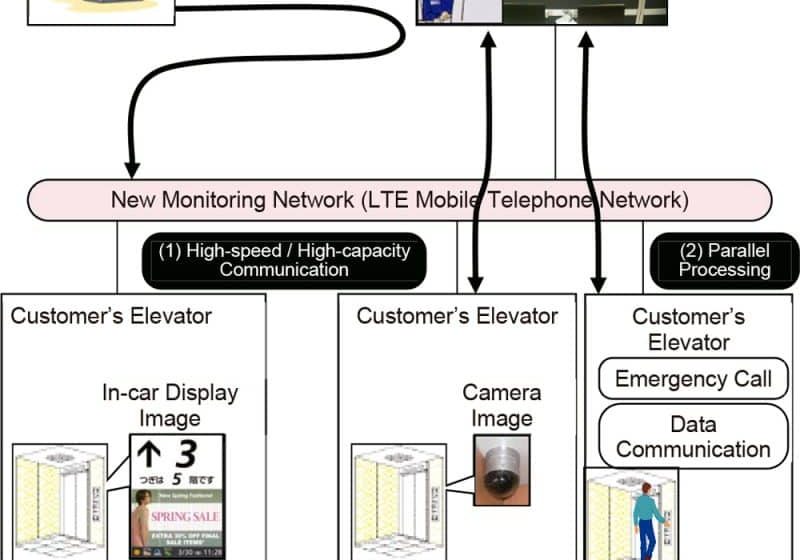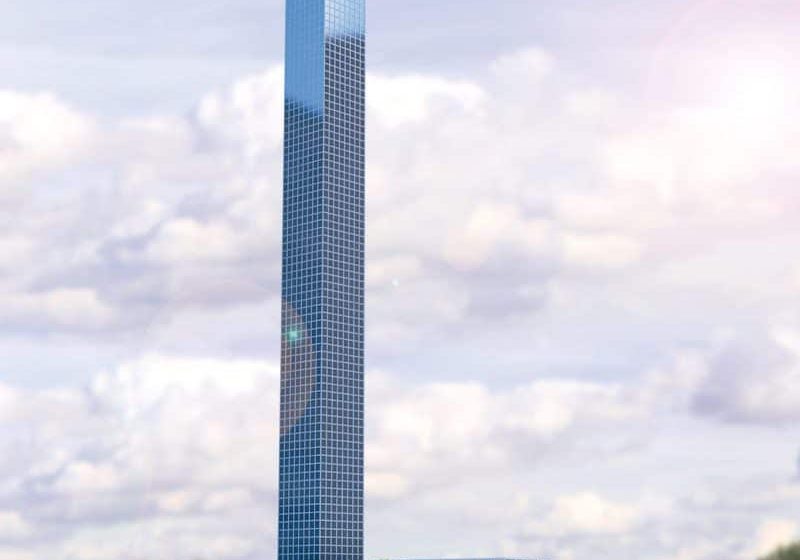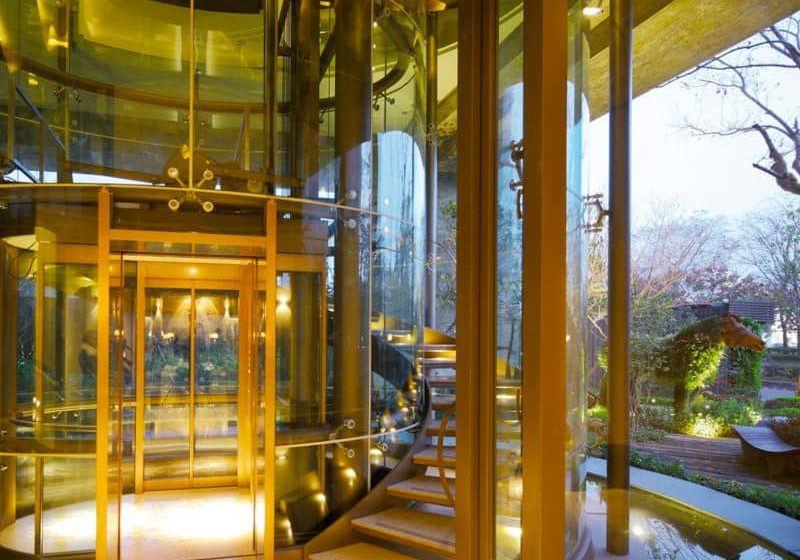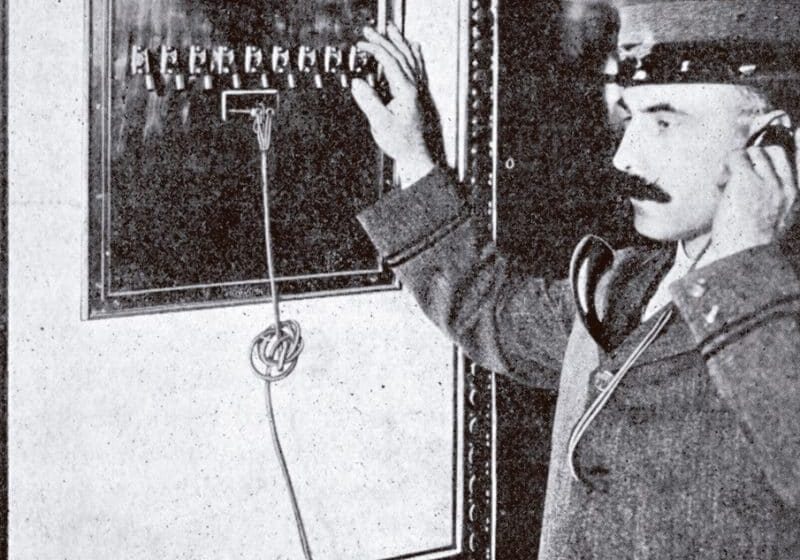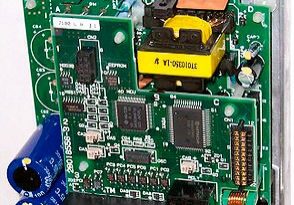Staying Connected
Nov 1, 2016

Elevator coverage for mobile services is becoming a mandatory requirement for buildings and is rapidly becoming a requirement in lease agreements between tenants and building owners. In addition, there is an overall requirement for in-elevator coverage for public-safety wireless applications. Traditional solutions for wireless coverage inside elevators leave much to be desired: antennas mounted within the elevator shaft fail to provide consistent coverage throughout the height of the building in tall buildings, and lobby-mounted antennas cause constant handoffs for elevator passengers with mobile devices, degrading call performance and leading to dropped calls.
In this article, we consider the traditional options for wireless coverage in elevators and look at a new solution that overcomes the shortcomings of legacy solutions.
Demand for Wireless Coverage in Elevators
With the evolution of mobile telecommunications, user demand for continuous, high-quality wireless voice and data performance throughout buildings has become a major issue for building owners. Increasingly, tenants demand ubiquitous coverage within the building, including the ability to continue a call or other mobile session as they enter and ride inside an elevator car. They have little tolerance for service disruptions due to elevators.
Still, providing seamless coverage inside elevators is one of the biggest challenges of in-building wireless. Elevator cars are metal, and, because wireless signals cannot easily pass through non-porous materials, wireless service from the outside can be blocked, resulting in poor connectivity within. And, as the elevator travels from the bottom to the top of the building, it can pass through different zones of wireless coverage, depending on the placement of remote antennas within the structure, which can lead to poor service or dropped calls.
Fundamentally, the wireless challenge inside elevators is a combination of the height of buildings, the strength of construction materials required for elevator cars and the mobility of the cars. The height of a building means that antennas within the elevator shaft may not provide adequate signal strength (especially in taller buildings) to cover the entire shaft, and the metal construction of the cars blocks outside wireless signals. As cars move up and down an elevator shaft, the signal from external antennas grows and fades as the car nears and then moves away from antennas on each floor.
Traditional Solutions
Traditionally, there are two ways to provide wireless coverage inside elevators:
- Place distributed antennas in each elevator lobby on every floor.
- Place a high-power distributed antenna at the top or bottom of each elevator shaft.
Let’s look at these solutions and see how they address the problem and where they fall short.
Coverage from the Elevator Lobby
Traditionally, antennas have been located in elevator lobbies as close to the elevator doors as possible, with leakage through the elevator doors providing coverage to the elevator cars. However, modern elevator construction, the speed of elevators and the increasing number of elevators in a single bank make this method more and more unpredictable. The signal-strength loss from the lobby antenna through a set of elevator doors can be as high as 30 dB, which can result in a signal that is only adequate when the elevator is directly adjacent to the lobby and makes achieving the required building service requirements very difficult.
Further, with the advent of elevators that cover only part of a building and bypass certain floors, elevator coverage “between” floors for the entire elevator journey is almost impossible. High-rise buildings with multiple wireless sectors will also encounter handovers between the coverage areas as the elevator passes through the different zones. This leads to multiple handoffs as the mobile device travels from zone to zone, leading to an increased possibility of dropped calls inside the elevator.
Finally, attempting to provide wireless service from the elevator lobby can be expensive, with its need for equipment dedicated to providing elevator coverage on every floor.
Antennas at the Top or Bottom of Elevator Shafts
The second traditional solution is to mount antennas at the top or bottom of the elevator shaft. This is typically done with high-gain antennas radiating high power to flood the area with coverage. This solution is most effective in smaller buildings with a limited number of floors, where the length of the elevator shaft is relatively short. Coverage of an elevator shaft and attempting to penetrate the elevator car create issues with the radio signals attenuating as the car moves farther away from the antenna at the top or bottom of the shaft.
A New Coverage Solution
A third way to provide wireless coverage inside elevators is to mount a remote antenna on the roof of each elevator car. This solution addresses the shortfalls of the more traditional elevator coverage methods already discussed. It creates a dedicated zone of wireless service within the car that travels with the car as it moves up and down through the elevator shaft.
As such, this solution eliminates device handoff from one wireless zone to another as the car moves from floor to floor. The mobile device always remains within the same coverage zone. It also eliminates the other major issue (wireless signal attenuation caused by locating antennas anywhere external to the car, either at the top or bottom of a shaft or in an elevator lobby), thereby guaranteeing a strong signal. With this solution, consistent wireless performance is ensured, regardless of whether the elevator is on the bottom floor, top floor, somewhere in between or moving between floors.
There are several requirements for an elevator car-mounted antenna solution, including cabling infrastructure, remote unit size, “feeder” hub flexibility and multifrequency support.
The first requirement is that the distributed antenna system (DAS) supplying the on-car remote unit use a fiber-optic cabling infrastructure from end to end. The half-in. coaxial cabling used by traditional DAS solutions is too heavy and inflexible to be installed along with other cables connecting an elevator to its electrical power source. In contrast, fiber is light, flexible and supports distances of up to 2 km, so it has ample performance and reach to deliver multicarrier wireless signals to an elevator car, even in the tallest buildings.
The second requirement is that the remote unit be small and light enough for mounting on the roof of an elevator car. Many DAS solutions on the market today use chassis-based remote units that are too large and heavy for such use.
Fiber is light, flexible and supports distances of up to 2 km, so it has ample performance and reach to deliver multicarrier wireless signals to an elevator car, even in the tallest buildings.
The third requirement is that the “feeder” hub, which drives the remote units, be as scalable and flexible as possible. Ideally, installers would want to mount this hub at the top of a bank of elevators or in an adjacent wiring closet and use it to drive the individual remotes on the tops of multiple elevators. A scalable hub should be modular and able to drive at least eight remotes.
The final requirement is that the remote units must support multiple frequencies and services. Different mobile operators use different frequencies such as 850/1900 MHz, 700 MHz LTE, and 2100 MHz AWS, and it’s impossible to predict which frequencies will be needed inside elevator cars in busy buildings.
Further, mobile operators license new frequencies every few years. If possible, the remote unit should support not only all current frequencies, but also have the ability to accommodate new services in the future without requiring a hardware upgrade. Thus, the system wouldn’t have to be physically upgraded each time a new frequency appears.
The system should also accommodate public-safety services. As a whole, this will significantly reduce the total cost of ownership of the elevator coverage system.
In short, the ideal solution for wireless coverage within elevators will use an all-fiber DAS that uses small remote units, has flexible and scalable hubs and has a wideband architecture that supports current and future frequencies without requiring hardware upgrades.
Wireless coverage inside elevators has always been a challenge that has usually required over provisioning of remote antennas in areas near the elevator doors, generally resulting in a costly, sub-optimal solution. A car-mounted remote antenna system delivers superior coverage and performance at a reasonable cost, ensuring happy building owners, tenants and visitors.
Get more of Elevator World. Sign up for our free e-newsletter.



